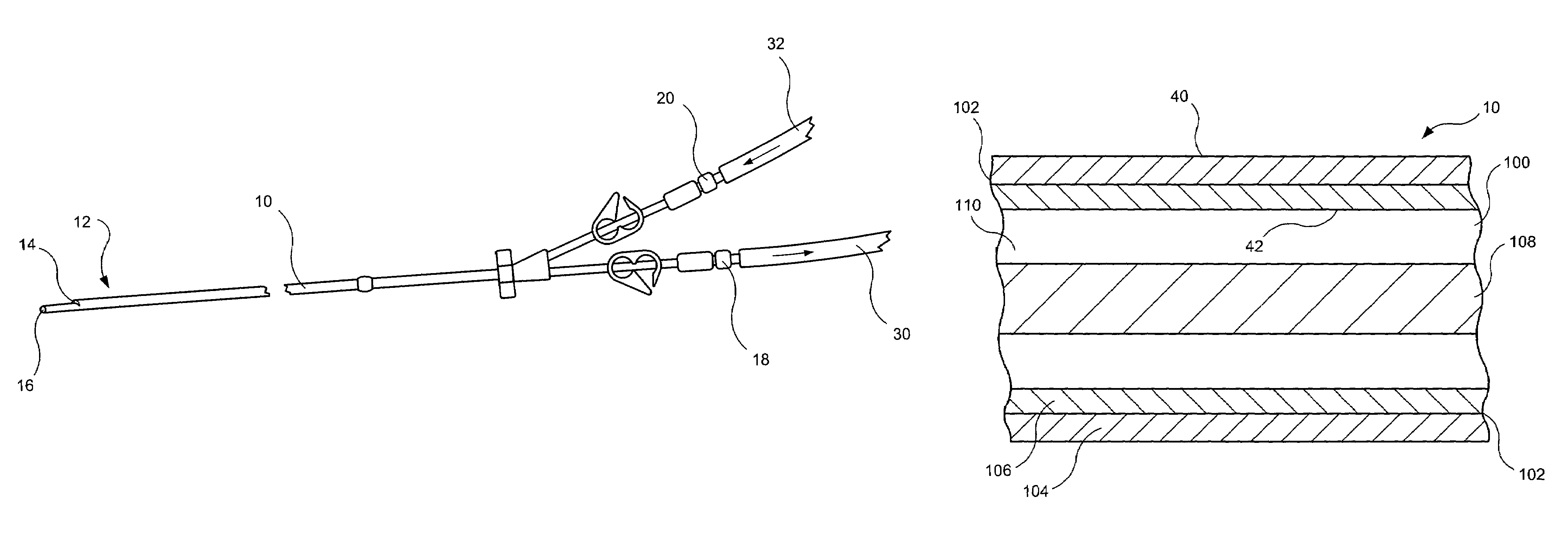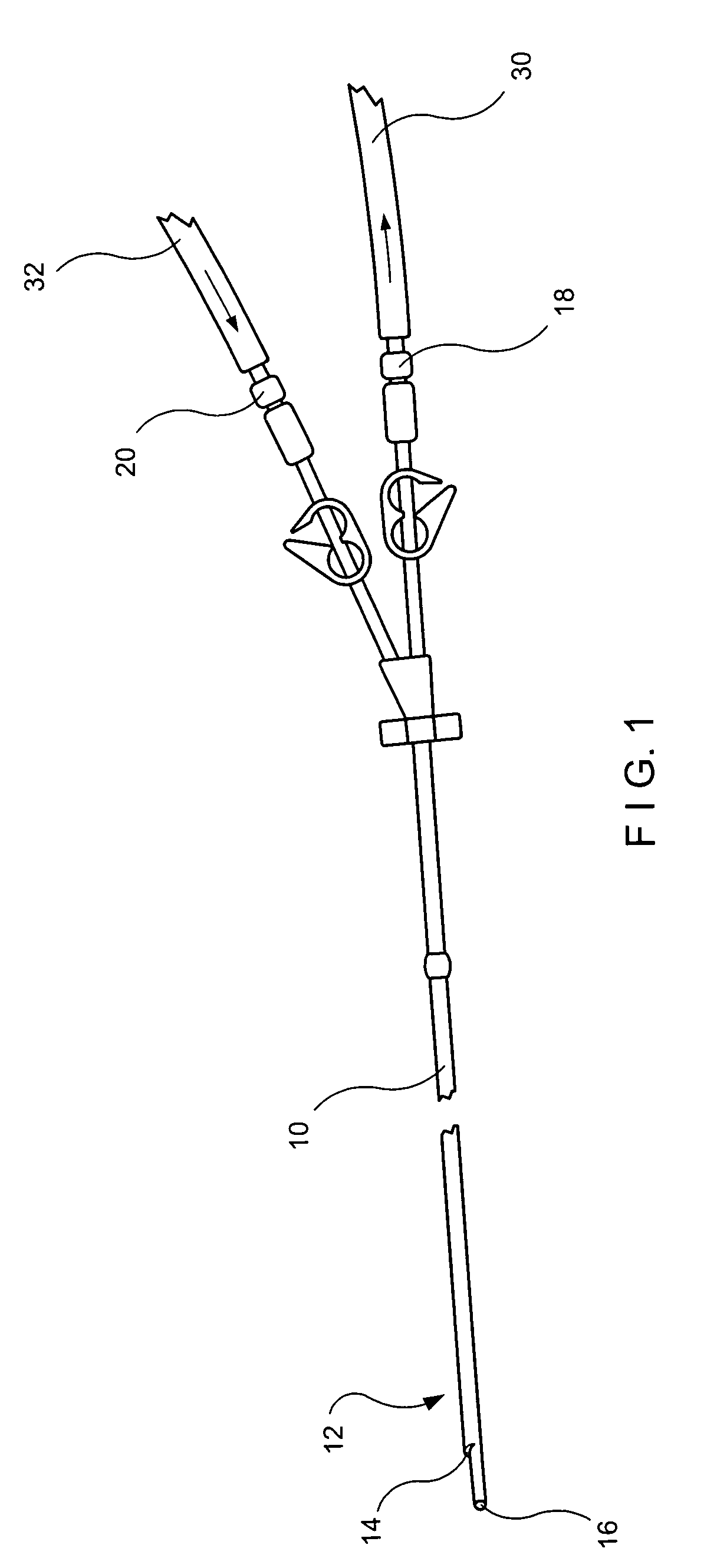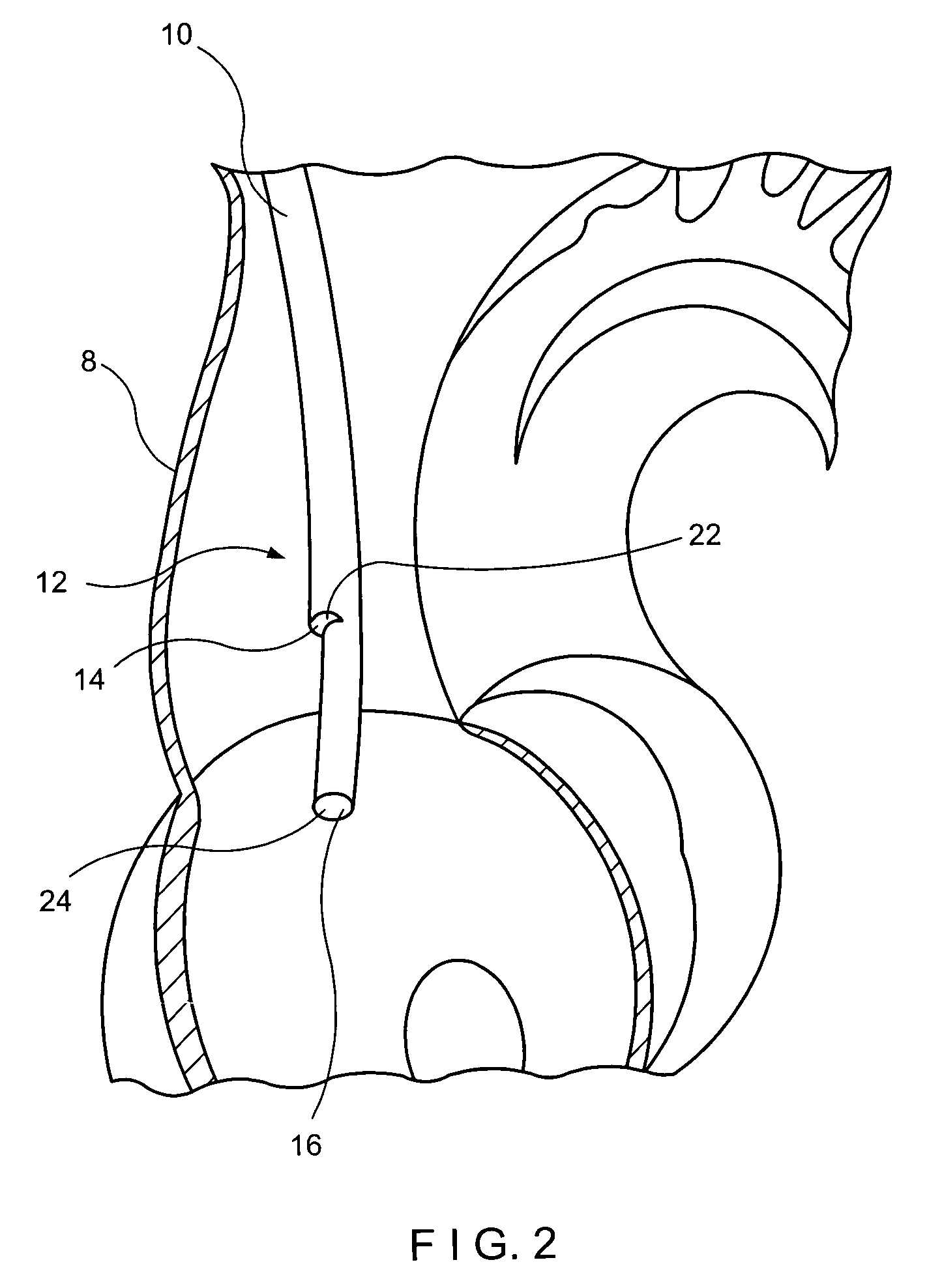Anti-infective central venous catheter with diffusion barrier layer
a technology of diffusion barrier layer and central vein catheter, which is applied in the direction of catheter, etc., can solve the problems of severe complications, inability to meet the needs of patients, and inability to insert and remove the catheter for each procedure,
- Summary
- Abstract
- Description
- Claims
- Application Information
AI Technical Summary
Benefits of technology
Problems solved by technology
Method used
Image
Examples
Embodiment Construction
[0011]The treatment of many medical conditions requires repeated access to a patient's venous system for therapeutic sessions, for example, to carry out transfusions, administer antibiotics, drugs, nutrition or chemotherapy agents to the blood stream, or to purify a patient's blood. Kidney dialysis is one of such treatments which requires chronic access to patients' blood streams in order to treat chronic renal failure. In the case of ailments for which no cure has yet been found, these therapeutic sessions may need to be repeated periodically for the life of the patient. In many cases the sessions are required several times per week with each session lasting several hours. Cumulative damage to the skin and vascular walls caused by repeated punctures makes it impractical to introduce a new catheter into the patient's venous system at every session. Accordingly, as described above a semi-permanently implanted catheter is often used, which is maintained in place in the patient for an ...
PUM
 Login to View More
Login to View More Abstract
Description
Claims
Application Information
 Login to View More
Login to View More - R&D
- Intellectual Property
- Life Sciences
- Materials
- Tech Scout
- Unparalleled Data Quality
- Higher Quality Content
- 60% Fewer Hallucinations
Browse by: Latest US Patents, China's latest patents, Technical Efficacy Thesaurus, Application Domain, Technology Topic, Popular Technical Reports.
© 2025 PatSnap. All rights reserved.Legal|Privacy policy|Modern Slavery Act Transparency Statement|Sitemap|About US| Contact US: help@patsnap.com



